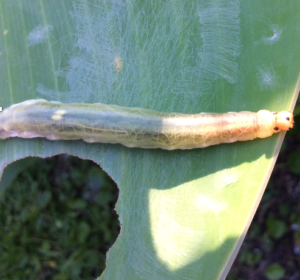Canna Leafrollers and How to Treat Them
go.ncsu.edu/readext?533261
en Español / em Português
El inglés es el idioma de control de esta página. En la medida en que haya algún conflicto entre la traducción al inglés y la traducción, el inglés prevalece.
Al hacer clic en el enlace de traducción se activa un servicio de traducción gratuito para convertir la página al español. Al igual que con cualquier traducción por Internet, la conversión no es sensible al contexto y puede que no traduzca el texto en su significado original. NC State Extension no garantiza la exactitud del texto traducido. Por favor, tenga en cuenta que algunas aplicaciones y/o servicios pueden no funcionar como se espera cuando se traducen.
Português
Inglês é o idioma de controle desta página. Na medida que haja algum conflito entre o texto original em Inglês e a tradução, o Inglês prevalece.
Ao clicar no link de tradução, um serviço gratuito de tradução será ativado para converter a página para o Português. Como em qualquer tradução pela internet, a conversão não é sensivel ao contexto e pode não ocorrer a tradução para o significado orginal. O serviço de Extensão da Carolina do Norte (NC State Extension) não garante a exatidão do texto traduzido. Por favor, observe que algumas funções ou serviços podem não funcionar como esperado após a tradução.
English
English is the controlling language of this page. To the extent there is any conflict between the English text and the translation, English controls.
Clicking on the translation link activates a free translation service to convert the page to Spanish. As with any Internet translation, the conversion is not context-sensitive and may not translate the text to its original meaning. NC State Extension does not guarantee the accuracy of the translated text. Please note that some applications and/or services may not function as expected when translated.
Collapse ▲We are supposed to be north of the typical population area of larger canna leafrollers, but we’ve seen enough evidence the past couple of years: the two varieties of leafrollers, larger and smaller, that “roll” among us.
Your initial symptoms may be leaves that remain tightly folded, or that expand but have a line of holes or linear spots. As the season continues, the leaves might develop ragged edges and obvious signs of webbing.
If you find leafrollers gnawing on your cannas, alternate spraying products with the active ingredients spinosad and Bacillus thuringiensis (Bt) every week, making sure to spray down into the rolled-up leaves where caterpillars hide. (Spinosad can be applied up to 6 times per season, per crop, so alternating with Bt gives you a longer treatment window.) Consider acephate if the caterpillars are larger than 1/2 inch in length. Also, cut and remove all foliage from the site at the end of the season to reduce overwintering pupa.
Remember: early treatment helps reduce the population but, unless everyone in the neighborhood is treating their cannas, you might have to treat them again later.
Want to learn more about the pesky buggers? Check out this link:




